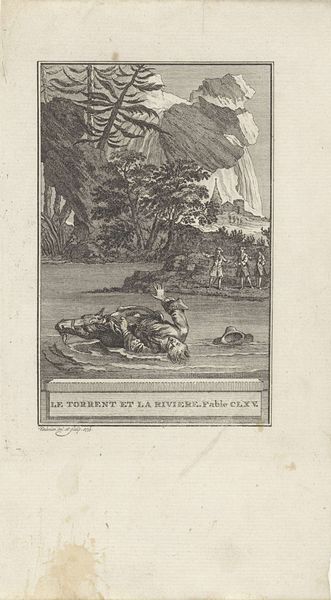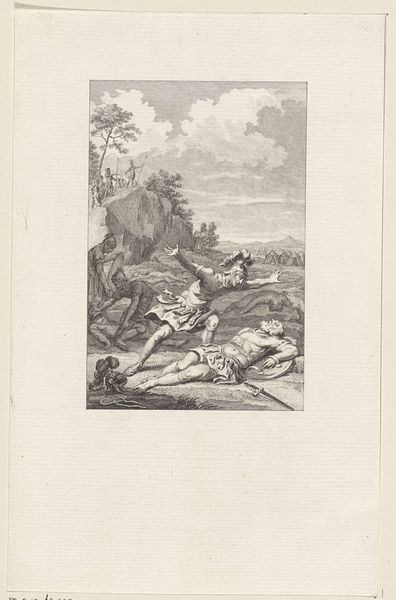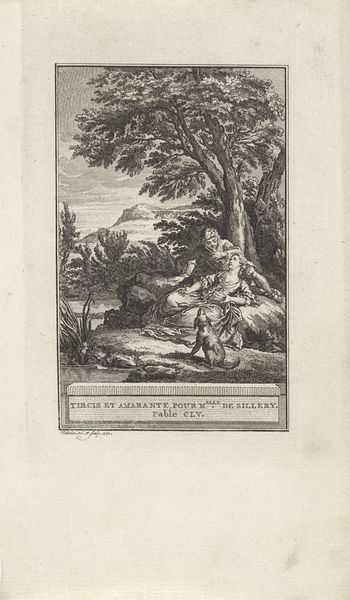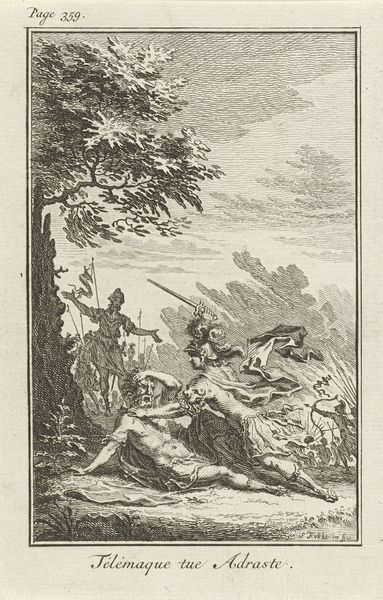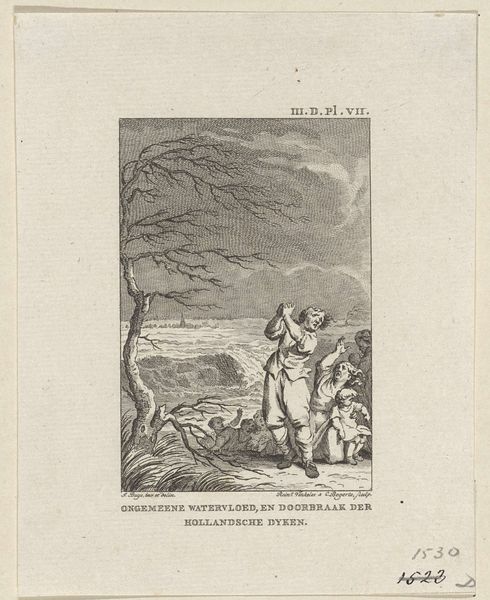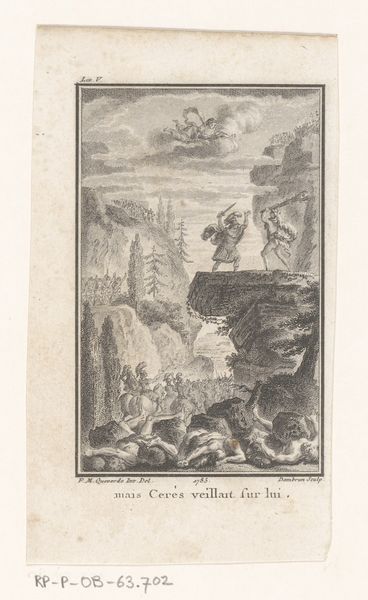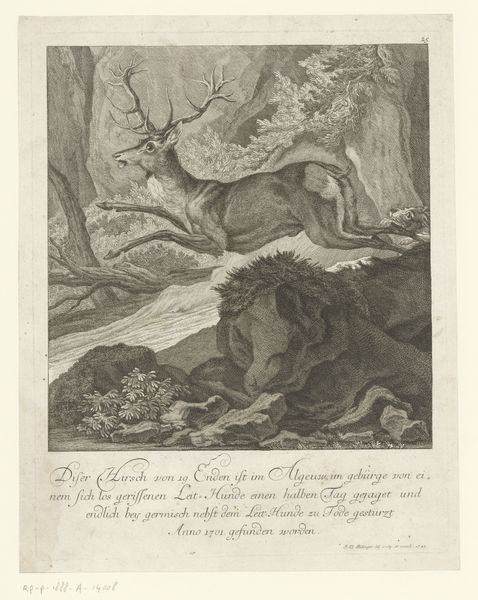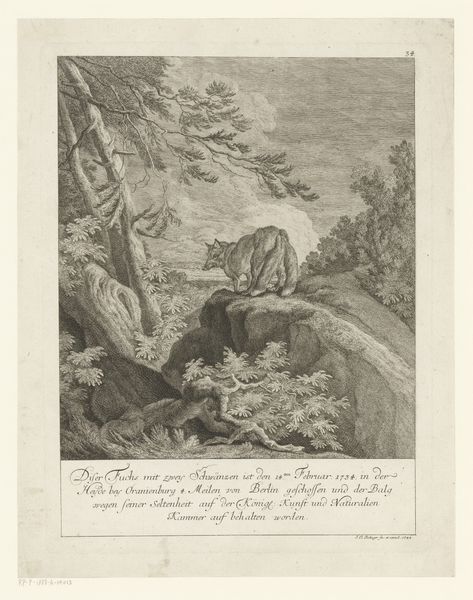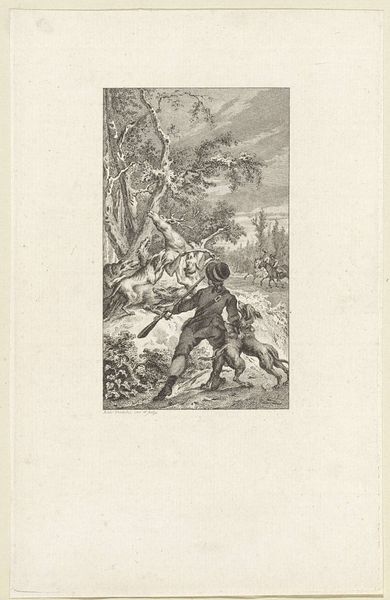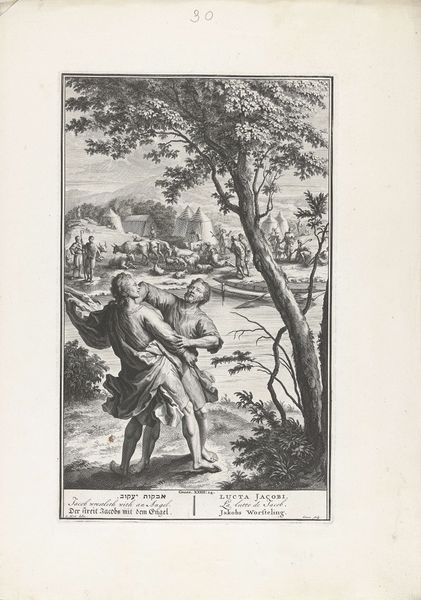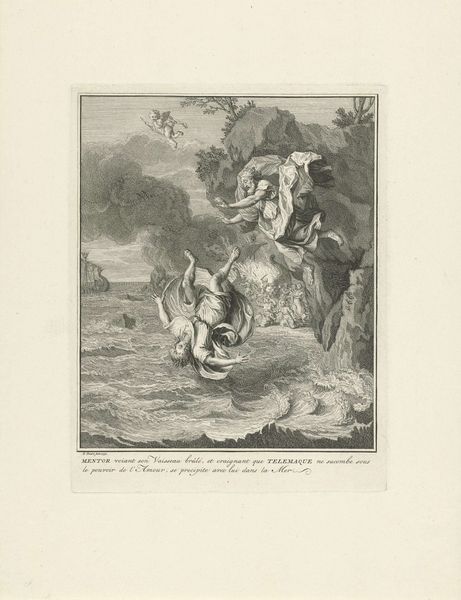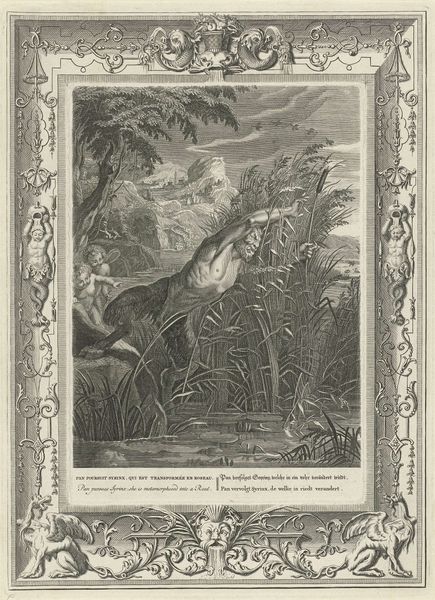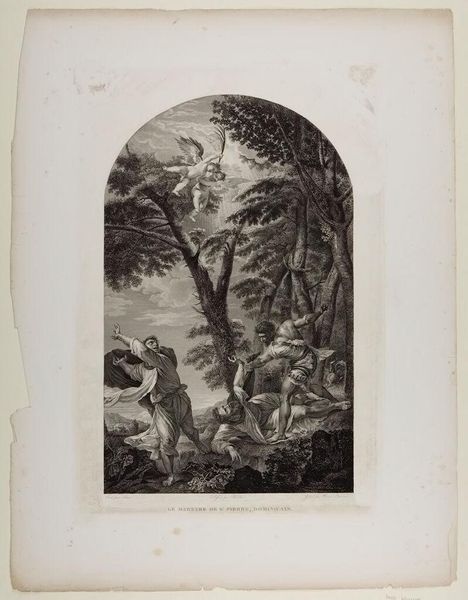
Dimensions: height 215 mm, width 125 mm
Copyright: Rijks Museum: Open Domain
Reinier Vinkeles created this etching, “Funeral of the Lioness,” sometime before his death in 1816. An etching like this begins with a metal plate, likely copper, coated with a waxy ground. The artist then scratches an image into this ground with a needle, exposing the metal. The plate is then immersed in acid, which bites into the exposed lines, creating grooves. Ink is applied to the plate, filling these grooves, and the surface is wiped clean. Finally, the plate is pressed onto paper, transferring the ink and creating the print. The result has a distinct character, a kind of wiry density that gives the image its dramatic feel. Prints like these weren’t simply art objects. They were a reproductive technology, allowing images and ideas to circulate widely. Vinkeles's skill wasn't just artistic; it was artisanal, part of a long tradition of craft and labor that underpinned the spread of visual culture. So, next time you see an etching, remember the layers of work, skill, and social context embedded within its lines.
Comments
No comments
Be the first to comment and join the conversation on the ultimate creative platform.
